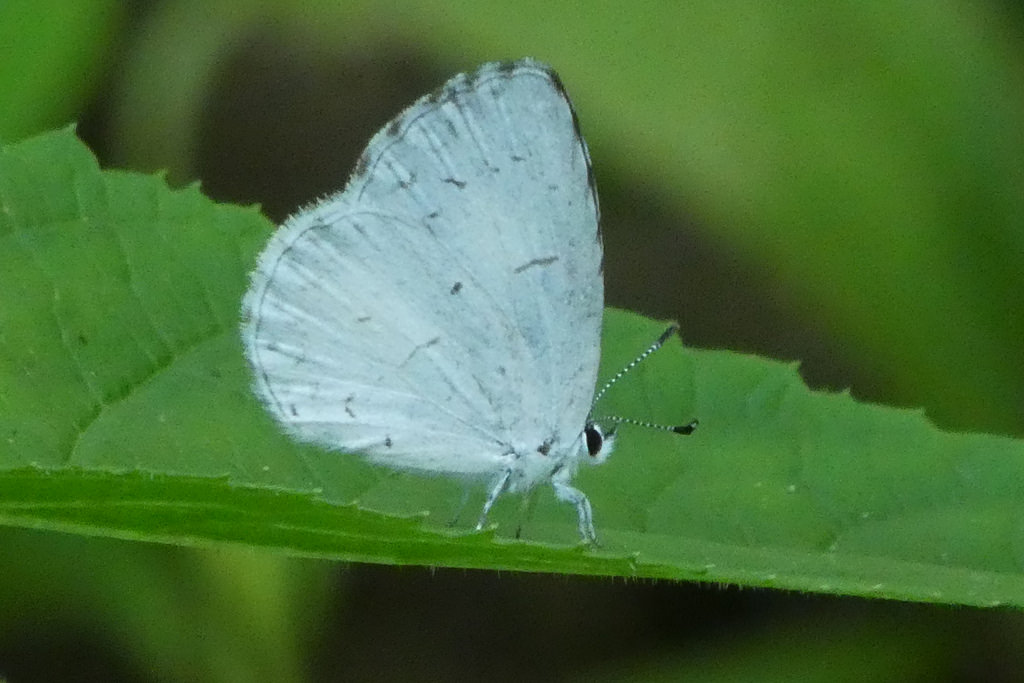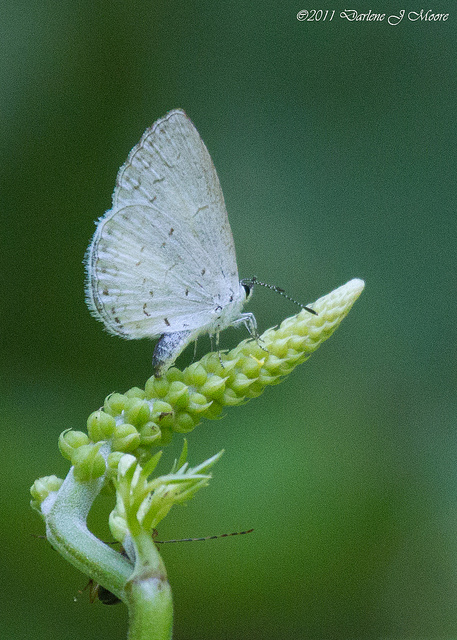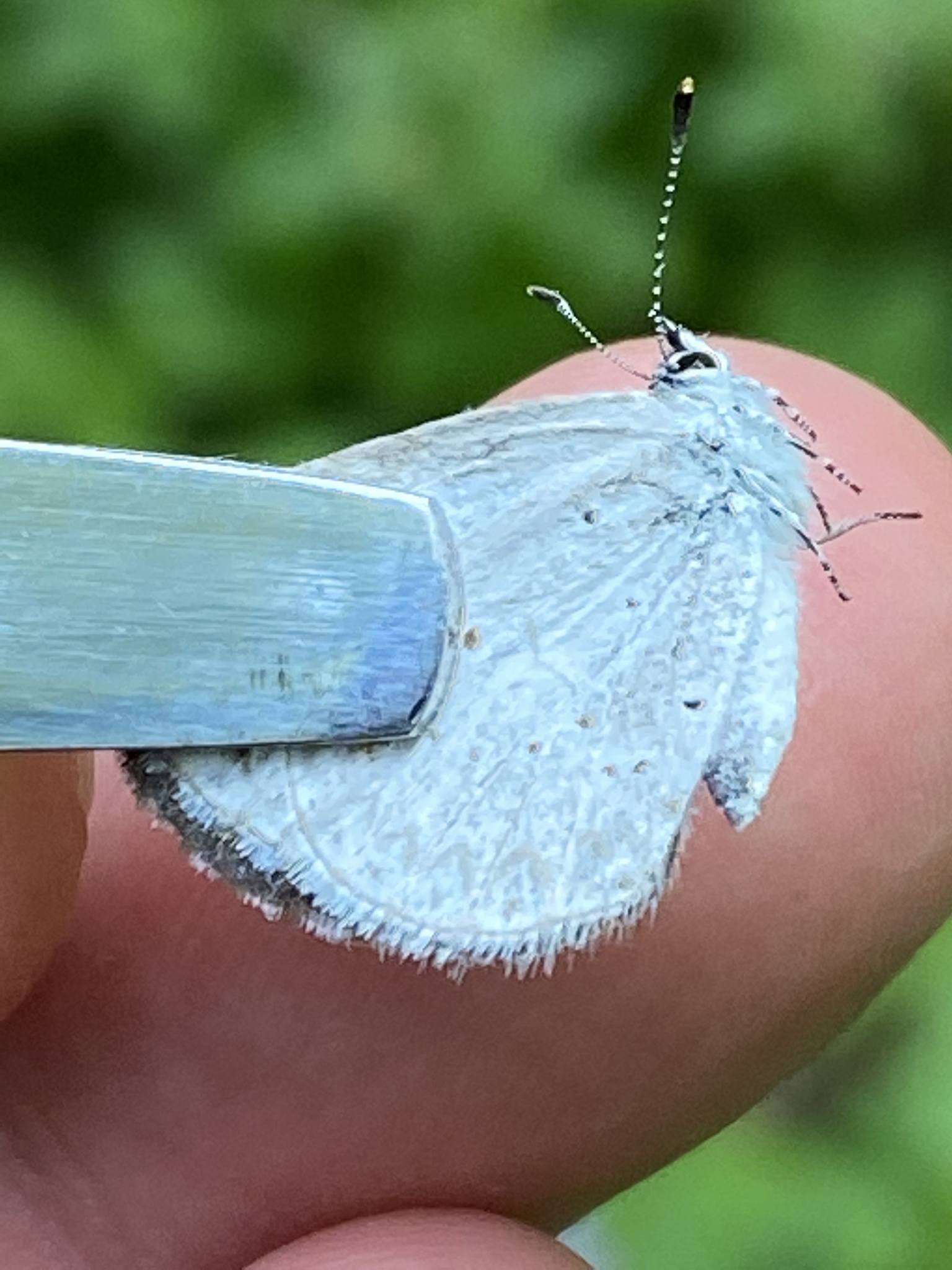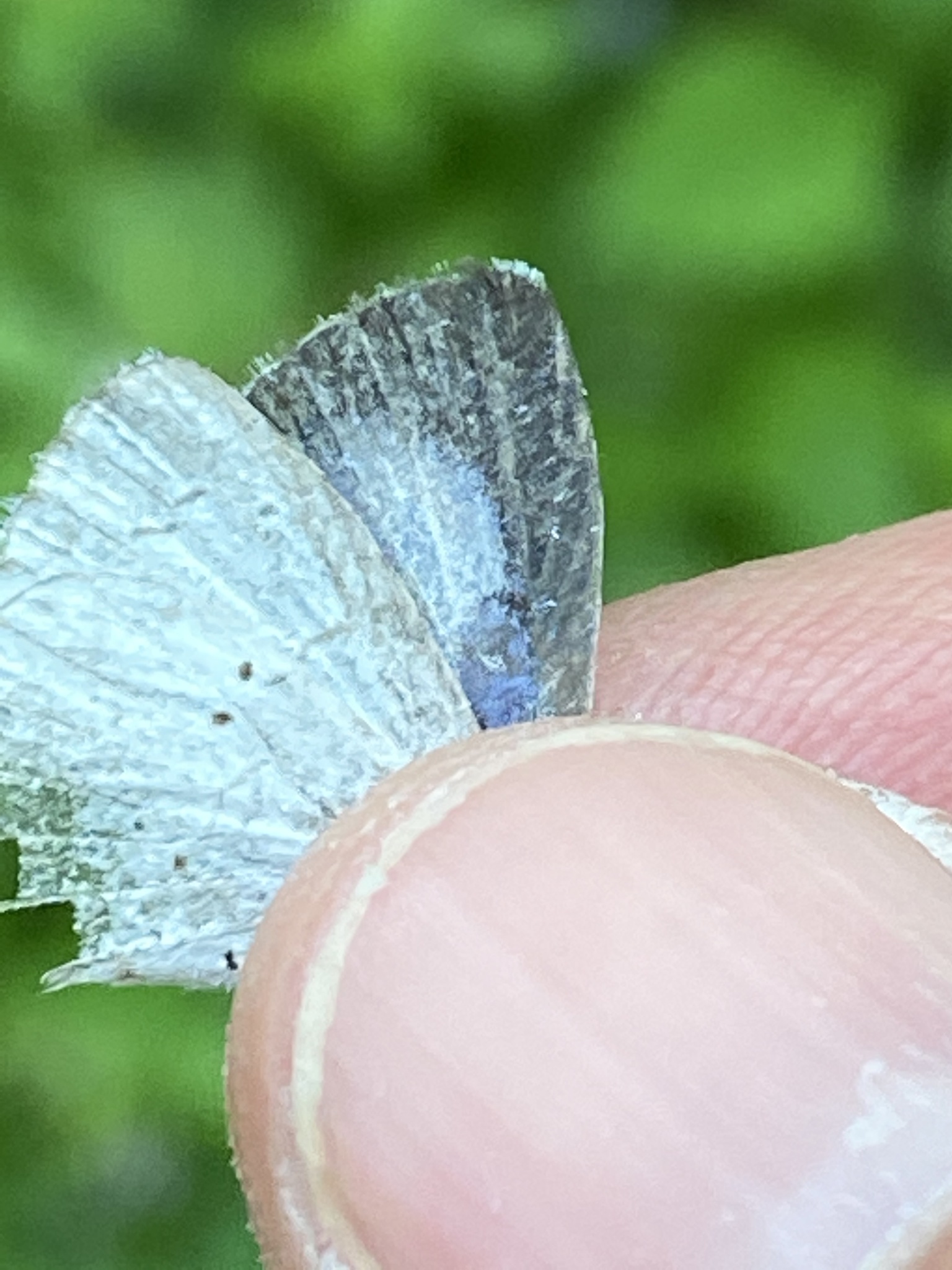Map Snapshot







24 Records
Status
The Appalachian Azure (Celastrina neglectamajor) is a member of a very difficult complex of similar, small blue and whitish butterflies found through eastern North America. The species boundaries within Celastrina appear to be difficult to discern, and without microscopic examination or association with host plant, many are best left as Celastrina species. This particular species is associated with Black Baneberry (Black Cohosh) as a larval host, and is ranked as S3 (watch list) in the state of Maryland. This species is univoltine, and flies from early May to early June (Butterflies of Maryland: A Biological Summary and Checklist by Lynn Davidson & Richard Smith).
Description
Averages rather large for an azure, with a very chalky white hindwing. Very similar to Spring Azure Celastrina ladon) and perhaps not safely identified in the field, except by association with its host plant (Brock & Kaufman, 2003). Early instar caterpillars are yellowish, while Summer Azure caterpillars, which can occur on this host plant, are green.
Where To Find
Rich deciduous forest with populations of the host plant.
Relationships
Appalachian Azure uses Black Baneberry (Actaea racemosa) as a larval host.
Seasonality Snapshot
Source: Wikipedia
| Appalachian azure | |
|---|---|

| |
| Scientific classification | |
| Domain: | Eukaryota |
| Kingdom: | Animalia |
| Phylum: | Arthropoda |
| Class: | Insecta |
| Order: | Lepidoptera |
| Family: | Lycaenidae |
| Genus: | Celastrina |
| Species: | C. neglectamajor
|
| Binomial name | |
| Celastrina neglectamajor Opler & Krizek, 1984
| |
| Synonyms | |
| |
The Appalachian azure (Celastrina neglectamajor) is a butterfly in the gossamer wings family Lycaenidae. The male is light blue on the upperwing with a narrow, dark line running along the edge of the forewing. The underwing is chalky white and is dotted with small, pale dark spots.[2] The very back of the hindwing has a row of dark spots running along the edge and contained by a faint zigzagging band.[2] Females are similar to the males but have broad dark wing borders instead of the male's narrow ones.[2] The adult butterfly has a 1.1–1.4-inch (2.8–3.6 cm) wingspan.[2] It is the largest azure in the area.[3]
The Appalachian azure is found throughout the central and southern Appalachian Mountains from Pennsylvania to Georgia and has a few isolated records from Missouri, Kentucky, and Ohio.[4] It lives in moist deciduous woodlands with plenty of shade and streamsides near these forests. Males often gather in groups near mud puddles by these streamsides.[2] The species is listed as endangered in Connecticut.[5]
The adult butterflies only lay one set of eggs. The azure's eggs are laid singly on the flower buds of a host plant, though several eggs may be on the same plant.[2] The eggs are a pale green.[2] The larvae range in coloration from a yellowish green in the early stages of life to a reddish brown.[6] They typically have an incomplete dark dorsal band and the greener caterpillars may have pale white markings.[2][3] The Appalachian azure's larvae are specialists, living on and only eating the flowers of the black cohosh (Actaea racemosa).[2][3]
The adult azure typically lives for a few weeks from mid-May to late June.[4] It is temporally separated from similar species of azure in its range by living as a butterfly after the similar spring azure but before the summer azure.[2]
The scientific name neglecta-major was first coined in 1908 by Tutt as a 'form', describing the late spring generation of Celastrina argiolus pseudargiolus. In their authoritative monograph on the Lycaenopsis group of Polyommatine genera, Eliot & Kawazoe treated pseudargiolus as a synonym of ladon, Cramer, 1780. Thus the according to neglectamajor of specific status is very doubtful.
Although this species is not threatened with extinction, its habitat may be threatened by the spread of the garlic mustard (Alliaria officinalis).[4] Additionally, black cohosh is being harvested from the wild for use as a dietary supplement. Wild harvesting of medicinal plants can lead to low numbers of those plants.
References
[edit]- Eliot, J. N. and Kawazoe, A., 1983. Blue butterflies of the Lycaenopsis group: 1-309, 6 pls. London.
- ^ "NatureServe Explorer 2.0 Celastrina neglectamajor Appalachian Azure". explorer.natureserve.org. Retrieved 20 September 2020.
- ^ a b c d e f g h i j Daniels, Jaret C. (2003). Butterflies of the Carolinas. Cambridge, MN: Adventure Publications, Inc. pp. 92–93. ISBN 1-59193-007-3.
- ^ a b c Pippen, Jeffrey (2005-07-03). "Appalachian Azure (Celastrina neglectamajor)". Jeffrey S. Pippen. Retrieved 2009-05-07.
- ^ a b c "Appalachian Azure". Butterflies and Moths of North America. Montana State University. Archived from the original on 2009-03-12. Retrieved 2009-05-07.
- ^ "Connecticut's Endangered, Threatened and Special Concern Species 2015". State of Connecticut Department of Energy and Environmental Protection Bureau of Natural Resources. Retrieved 19 January 2018.
- ^ Cook, Will (2008-04-05). "Appalachian azure (Celastrina neglectamajor)". Carolina Nature. Archived from the original on 30 April 2009. Retrieved 2009-05-07.








